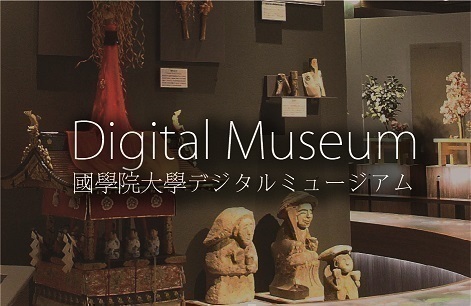- トップ
- Encyclopedia of Shinto
- Hōsōgami
Encyclopedia of Shinto
| Main Menu: | |
| Links: |
詳細表示 (Complete Article)
| カテゴリー1: | 2. Kami (Deities) |
|---|---|
| カテゴリー2: | Kami in Folk Religion |
| Title | Hōsōgami |
| Text | "Smallpox kami," a kami believed responsible for the spread of epidemics of smallpox (hōsō). Alternately, a tutelary of smallpox with the power to prevent such epidemics. The first smallpox innoculation center in Edo was established in 1858, but until such centers were widely distributed in the Meiji period, Japan was subject to repeated epidemics of smallpox and measles which left large numbers of dead and which represented the most highly feared of infectious diseases. The erruption and spread of smallpox was viewed as the work of an noxious spirit, leading to the concept of an evil "kami of smallpox." On the other hand, the tutelary kami which exorcised the evil smallpox spirit and provided protection from catching the disease was also called the "smallpox kami." According to legend, the Edo-period Zen monk Ingen Zenji of the Ōbaku Sect enshrined the "red-faced orangutan" (shōjō) as a kami of smallpox with the power to ameliorate the disease's effects; based on that tradition, the custom arose of enshrining the image of a orangutan dressed in red and carrying a dipper and cup, together with a round-bottomed doll shaped like the Buddhist monk Ingen, or a "Daruma doll." Printed images of the Hōsōgami, called benie or akae were printed on red paper and distributed as talismans which were displayed at the gateway or inside the home as guardians against the incursion of the pestilent spirit. Protective tutelary kami against smallpox included images or amulets of Minamoto Hachirō Tametomo (a late- Heian-period general) and Katō Kiyomasa (a 16th century general), as well as images of the kami Susanoo, the Heian-period courtier Sugawara Michizane, and a Chinese folk deity called Shōki or Shōkisama (Ch. Zhong-kui), all of whom were considered "fierce kami" with august powers. Tametomo was worshiped as a tutelary against smallpox since no smallpox epidemic ever struck the island of Hajijōjima, where one legend says Tametomo fled after being exiled. The malicious kami causing smallpox was also called tōki, meaning "pox devil," and most frequently represented as a child, although occasionally as a demonic old man or woman. Such images frequently portrayed a vigorous child dressed in plain clothes, heartily eating offerings of rice cakes, rice ball sweets (dango) and red-bean rice. The image of the child was modeled after the legendary demon Shūten Dōji (lit., "wine-drinking youth"). The fact that symptoms of smallpox include prominent red spots and red coloration of victims' faces led to the association of red with the smallpox kami, but the fact that red was adopted as the most prominent color in smallpox pictures (hōsō-e) was due to the belief that the color red had power to avert noxious spirits. In the same way as for other epidemic diseases such as cholera and measles, epidemic outbreaks of smallpox were the occasion for rituals called hōsōgami okuri ("parade of exorcising the smallpox deity"), in which an image representing the smallpox kami would be fashioned from straw, and carried in a procession accompanied by the sound of gongs, drums, flutes and conch shells to the village border, river, or the oceanside, where the image would be abandoned. Since victims who survived one infection with smallpox were immune from subsequent epidemics, the disease tended to be viewed as a rite of passage to maturity. This led to the custom of maternal grandparents making gifts of "orangutan dolls" which would be displayed at the grandchild's home in representation of the smallpox kami, in hopes that the child might be spared with only a mild case of the disease. Other common practices included the displaying of a red heisoku (a ritual implement made from strips of folded paper fixed to the end of a stick) as the physical symbol (yorishiro) of the smallpox kami, and sending the implement away as a symbol of exorcism when the child began to recover. These customs gradually disappeared, however, with the spread of innoculation as a means of preventing the disease. -Kawamura Kunimitsu |




